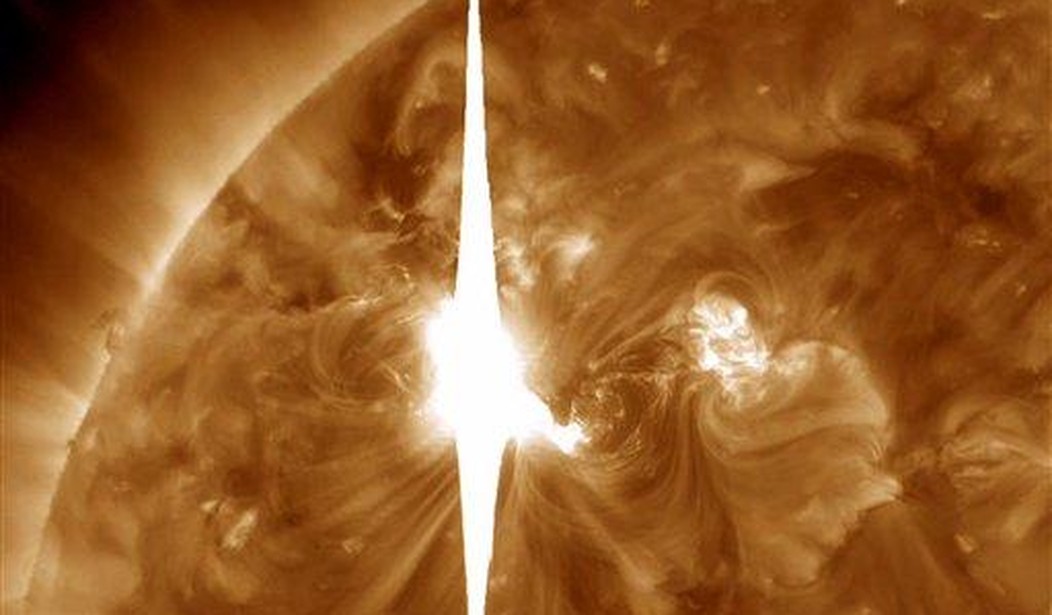I may have shared this before, but I’m a bit of a space nerd. Or maybe space-weather nerd. Not in the sense of being terribly well-educated on either, but fascinated nonetheless.
Because of that, I have my news alerts set to include space and weather-related articles. And when I saw this headline pop up Thursday, it caught my eye: A ‘double punch’ of solar storms could smash into Earth and spark widespread auroras this week. Sounds vaguely ominous, yet magnificent. Here’s the story behind it:
While the U.S. celebrated Independence Day on July 4, the sun held its own, more powerful firework display.
The stellar fireworks came in the form of two solar storms, or coronal mass ejections (CMEs), that are partly directed at Earth and were observed by NASA’s Solar and Heliospheric Observatory (SOHO) that orbits our star. CMEs can contain as much as a billion tons of plasma made up of charged particles and thus carry with them their own magnetic fields.
NASA has projected that the massive ejection of ionized gas called plasma will impact Earth by Friday (July 7). When the charged particles within CMEs strike the magnetic field of our planet, the magnetosphere, they can give rise to large disturbances called geomagnetic storms.
Space weather physicist Dr. Tamitha Skov shared a series of tweets about the storm on the 4th, predicting likely impact before noon UTC on Friday (so 8:00 am Eastern).
Our #Sun celebrates #July4 with its own special fireworks! We have two partly Earth-directed #solarstorms (aka CMEs) on their way. The second storm will catch up to the first giving us a 1,2-punch. Model predictions show impact likely July 7. I'll post NASA model runs next. pic.twitter.com/gtJwgcYS4Z
— Dr. Tamitha Skov (@TamithaSkov) July 5, 2023
The Sun launches double punch #solarstorms on #July4th! NASA prediction shows impact before noon July 7 UTC. The first storm is slower & will go mainly northeast. The second is faster & more a direct hit. Fast solar wind follows. G1-level possible with #aurora to mid-latitudes. pic.twitter.com/HhVIsgZcDr
— Dr. Tamitha Skov (@TamithaSkov) July 5, 2023
The geomagnetic storm is predicted by the National Oceanic and Atmospheric Association (NOAA) to possibly reach “G1-level,” described as minor, with the following potential effects:
Power systems: Weak power grid fluctuations can occur.
Spacecraft operations: Minor impact on satellite operations possible.
Other systems: Migratory animals are affected at this and higher levels; aurora is commonly visible at high latitudes (northern Michigan and Maine).
The predicted Friday solar storms follow a radio blackout on Sunday, prompted by a powerful “X-Class” solar flare.
A powerful solar flare from a fast-growing sunspot on the Sun’s surface triggered radio blackouts in some parts of the US.
The giant sunspot, named AR3354, was first spotted on the Sun on June 27 and grew rapidly within a span of two days to a size about 10 times larger than Earth, raising concerns among space weather scientists.
This sunspot first produced a minor M-class flare on 29 June and, after a brief period of calm, unleashed an X-class flare – the most powerful category of solar flare the Sun can belch out – aimed directly at Earth.
NASA explains the solar flare classes thusly:
Flares happen when the powerful magnetic fields in and around the sun reconnect. They’re usually associated with active regions, often seen as sun spots, where the magnetic fields are strongest. Flares are classified according to their strength. The smallest ones are B-class, followed by C, M and X, the largest. Similar to the Richter scale for earthquakes, each letter represents a ten-fold increase in energy output. So an X is 10 times an M and 100 times a C. Within each letter class, there is a finer scale from 1 to 9. C-class flares are too weak to noticeably affect Earth. M-class flares can cause brief radio blackouts at the poles and minor radiation storms that might endanger astronauts. Although X is the last letter, there are flares more than 10 times the power of an X1, so X-class flares can go higher than 9. The most powerful flare on record was in 2003, during the last solar maximum. It was so powerful that it overloaded the sensors measuring it. They cut-out at X17, and the flare was later estimated to be about X45. A powerful X-class flare like that can create long lasting radiation storms, which can harm satellites and even give airline passengers, flying near the poles, small radiation doses. X flares also have the potential to create global transmission problems and world-wide blackouts.
Sunday’s flare caused temporary radio blackouts:
The solar storm on Sunday led to brief radio blackouts lasting for about 30 minutes in the western US and parts of the eastern Pacific Ocean, according to NOAA.
The flare peaked in intensity at 7.14pm ET on 2 July, Nasa’s Solar Dynamics Observatory said in a statement.
However, unlike the July 4th flares, it did not launch a CME.
As noted, the flares set to hit Friday morning may result in mild power grid fluctuations, and the auroras may be seen as far south as Michigan and Maine. In April, a G4 geomagnetic storm rendered an aurora visible as far south as Alabama.















Join the conversation as a VIP Member